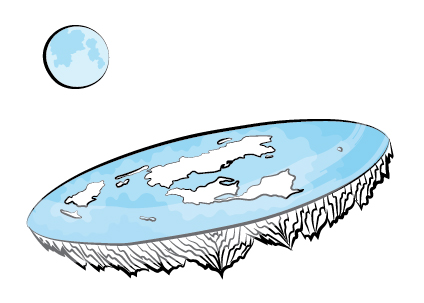
Mysteries of the New World
Twenty years before Jamestown was established, a small group of colonists settled Roanoke Island, off the coast of what is now North Carolina. When one of the colonists, John White, returned to the settlement three years later, the hundred people he had left were nowhere to be found, but their putative destination was carved into a post (not the tree that had been agreed upon): Croatoan. Croatoan was the name of a friendly tribe who lived on an island to the south. Were the settlers being held captive? Had they assimilated into Croatoan society? Nothing—not greater knowledge of the surrounding geography, not future visits to the site to unearth hidden treasures, not DNA tests on the modern residents of Roanoke Island—has answered the question conclusively.
The mystery lives on in online forums, where conspiracy theorists are quick to point out that this was not the only time the word Croatoan was connected to mysterious disappearances and deaths. Edgar Allan Poe is said to have repeated it, delusionally, in 1849, on his deathbed. Ambrose Bierce wrote it on a bedpost before disappearing in 1913. Amelia Earhart, who vanished in 1937, wrote it in her diary.
Coincidence, or something more? Perhaps it’s noteworthy that these online forums are the same communities where conspiracy theories are propagated around historical misapprehensions in cartography: the Mercator projection, the long-dominant and since-debunked world map that makes developed countries look bigger; the embarrassing number of eighteenth-century maps that render California as an island separated from North America by a narrow strait; all the way back to Henricus Martellus’s 1491 world map, which researchers believe Columbus used to sail the ocean blue in 1492, and which depicts South America before Europeans would have seen it—or so Paul Gallez alleged, in 1990, in The Tail of the Dragon. What information did Martellus have about South America’s existence?
Some lighter map-related fare aspires to similar insight. Consider America as Seen by Europeans, in which Texas occupies the entire space of the country between California and New York, or alternate-history takes like the map projecting what America’s borders would be had Native American nations expanded over the continent into the present day. In the meme titled “Sometimes I think North America is a fat dragon,” Canada becomes a dragon’s head and wings, Mexico its tail, Florida a claw, and the...
You have reached your article limit
Sign up for a digital subscription and continue reading all new issues, plus our entire archives, for just $1.50/month.
Already a subscriber? Sign in





